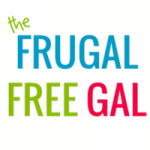
Setting Up a Savings Account: What You Need to Know
Setting up a savings account is the first step towards saving for the future. Consumers need to do more than just save for retirement. They also need to have an emergency fund they can rely on in case they lose their job or decide to take on an expensive project, like home remodeling. Unless a person has a safe place to store their extra money, they will be much less likely to save.
Different Types of Savings Accounts
Financial institutions offer more than one type of savings account. Before setting up an account, consumers will need to evaluate their needs and goals in order to choose the most beneficial option.
If a consumer is saving for their child’s college education, they will want to consider opening a 529 account. 529 accounts give parents a tax-free way to save for their child’s future. The downside is that the money must be used for education related purposes. This type of account will not suit those that need more flexibility.
A money market account is another option that consumers will want to consider. A money market account is similar to a savings account, with a few key differences. The first difference is that money market accounts offer customers higher interest rates. The second key difference is that these accounts require account holders to maintain a large minimum balance. If an account holder falls below this minimum balance, they will be charged a fee.
If neither of these two options meet a consumer’s needs, they can open a regular savings account. Savings accounts allow savers to earn interest on their money, while enjoying the freedom of accessing their money whenever they need. Most of these accounts don’t have minimum balance requirements, and if they do, the requirement is usually very low.
3 Questions that Savers Need to Ask Themselves Before Setting Up a Savings Account
1. Is my money insured?
It is absolutely necessary that your money is insured. Most savings accounts offered by banks and credit unions will be insured by the FDIC for up to $250,000. This means that if the bank were to go under, your money would be safe. If a financial institution does not let customers know that their money is FDIC-insured, do not open an account.
2. Am I getting the best interest rate?
One of the greatest perks of opening a savings account is that you will earn interest on your savings. Before setting up an account, consumers will want to check the rates offered by a few different banks to make sure they are getting a good rate.
3. What features does the account offer?
When setting up a savings account, make sure that your money will be easily accessible. Look for a savings account that offers online services, ATM access, overdraft protection, and if possible, check writing privileges. Many savings accounts even give customers the option of having money automatically withdrawn from their checking account at regular intervals. This helps savers fight the temptation of spending, instead of saving, their money.
When setting up a savings account, many people simply open an account at a financial institution close to their home, without exploring their options. However, consumers do need to consider which type of account they need, as well as the features the account offers, in order to get the most from their savings.
This is a guest post by David Spader.
